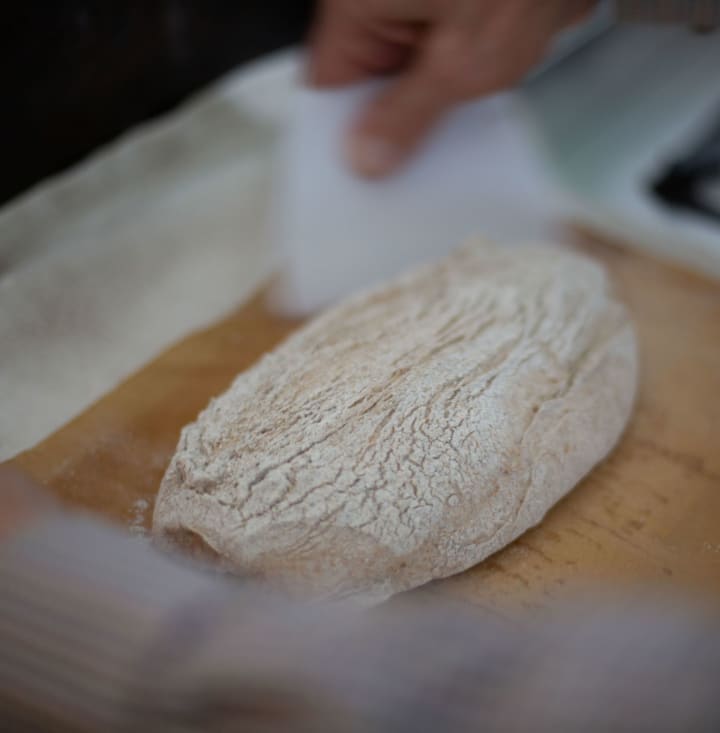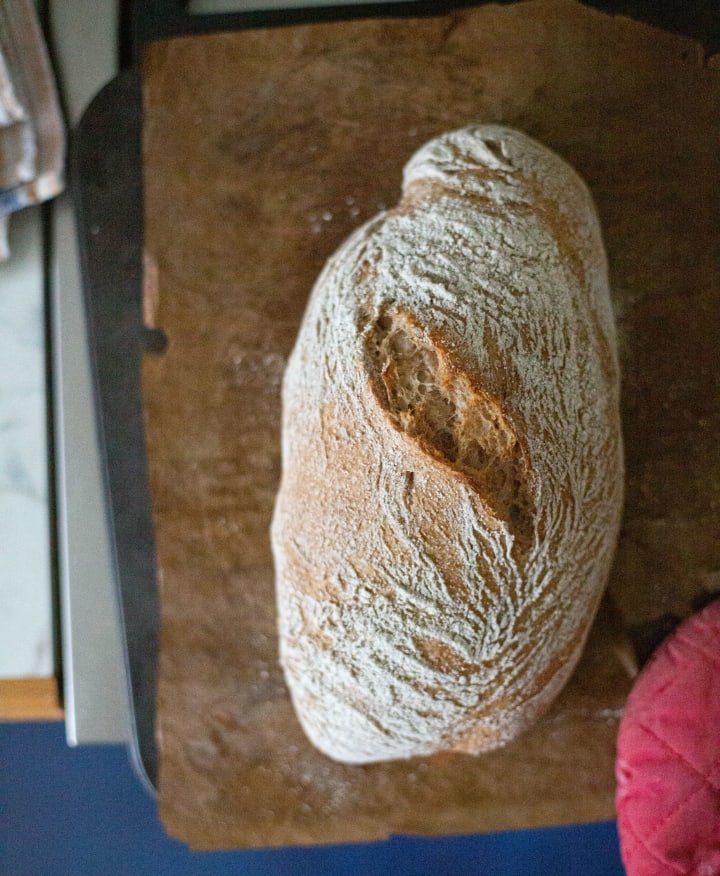A ciabatta - recipe perfected over a lifetime
How to make a homemade Italian ciabatta

There is a strong culture of bread making in my husband’s family. My father in law brought it with him from Italy and he has been perfecting his recipe for years now. He tends to wake up earlier than everyone else in the house. He walks to the kitchen and on dark winter mornings reaches for the light switch to comfortably move around the kitchen. The bread mixture starter usually waits for him where he left it the night before - but its texture has changed and bubbles have been forming on the surface, as if there was a fish underneath that pops out the air bubbles.
Here is a recipe for a ciabatta type of bread that comes out full of bubbles like a Swiss cheese if you give it time to rise fully.
Recipe
For the starter (the ‘poolish’)
Mix 100g of strong wholemeal flour with 100g of strong white. Add 200g of water and mix together with 2g of dried yeast. Allow the mix to rest overnight, 8 to 12 hours, while covered with a cloth at room temperature.
Making the bread
In the morning, put the poolish in a larger bowl or food mixer and add 350g of strong white flour, 5g of salt, 240g of water. If you are kneading by hand, you’ll need to leave the mixture to rise for 3 hours; but if you are using a food mixer bowl with beater (preferable to the dough hook because the mixture is wet), beat for 3 minutes on speed 1 and 3 minutes on speed 2, until the flour mixture starts to come off the sides. Put the mixture on a wet surface and with wet hands pull the dough with the help of a scraper, then fold it. Now stretch in another direction, and fold again. Do this 5 times. Your mixture is now in the shape of a ball, and you leave this to rest for 3/4 of an hour. Then repeat the dough pulling and folding exercise. Rest it again for 3/4 of an hour. Repeat for the final third time. (NB. resting times are important to allow bubbles to form in the mixture).
Next, generously sprinkle some flour on a dry work surface, and tip the dough on the floured surface. Sprinkle flour round the dough ball, and push it together with scrapers to form a nice rectangle. Avoid flattening it. Cut it in the middle and transfer each half to a floured cloth. Ease into two separate elongated shapes between well-floured folds of the cloth. Allow to rest while the oven is warming up to 200C.
Put a tray of water in the oven so that the oven is humid. Transfer each ciabatta to a baking tray and place on two separate shelves in the oven. Once in the oven, reduce the oven thermostat to 150C. After 20 minutes, change the two trays round (ie. between the two shelves, and turn each tray back-to-front at the same time). Bake for further 10 minutes. Give it an extra few minutes if necessary or to suit your taste. Transfer to a cooling rack.
When the bread is ready, it should have a lovely crust on the outside and lots of bubbles inside. Traditionally in Italy people considered bread to be the main dish – as the main sustenance - and everything else to be an add on to it – a flavour. Now the culture has changed somewhat but you will still receive bread and water just before the main course to share with your friends and family. The gesture of passing the basket with the bread around is a unifying symbol and a beautiful practice to embrace.
Who would you like to share your first two loaves of bread with?
Enjoy it!










Comments
There are no comments for this story
Be the first to respond and start the conversation.